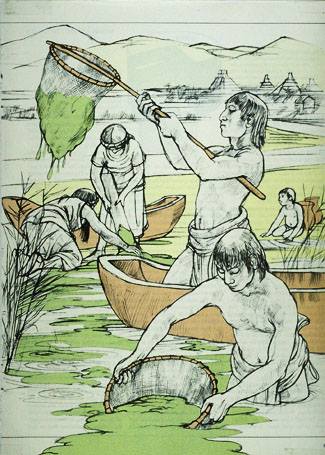Arthrospira Maxima is a photosynthetic, filamentous, spiral-shaped, multicellular cyanobacterium from the blue-green algae family. It is one of the two main strains of Arthrospira, also known as spirulina, alongside Arthrospira Platensis, which is the more widely cultivated one of the two.
The US National Space Agency, NASA, had research both arthrospira maxima and arthrospira platensis for their long space mission projects and found the best conditions for cultivating each strain.
Arthrospira Maxima is found in many freshwater environments, including ponds, lakes, and rivers. It thrives best in pesticide-free envirnments with plenty of sunlight, moderate temperature levels and a high pH, but it is also highly adaptable, surviving even in extreme conditions.
The Natural Origins of Arthrospira Maxima

Ironically and significantly, the most fertile valley of soda lakes with heavy Artrospira Maxima growth today the Great Rift Valley, which begins in Ethiopia and runs vertically through desert wastelands for hundreds of miles linking Ethiopia, Kenya, Tanzania, and Botswana. This valley floor is lined with several large soda lakes – large basins concentrating huge quantities of mineral salts leached from the volcanic soils by rainwater runoff over millennia. Along with the intense heat and sunlight of the area, these lakes provide the perfect growing conditions for Spirulina Maxima and Spirulina Platensis.
Arthrospira Maxima was rediscovered by the Conquistadores, an expedition led by Hernan Cortes, who conquered Mexico in the 16th century.
Tecuitlatl, Spirulinas original Aztec name, was a primary source of protein for the Aztecs for many centuries. It was made into cake-like bricks and sold on the market of Tenochtitlan, where the lake was often covered with birds in search of this food. Today, lake Texcoco remains abundant in Arthrospira maxima. It is also widely available in Lake Chad and in Hawaii.
« Back to Glossary Index
